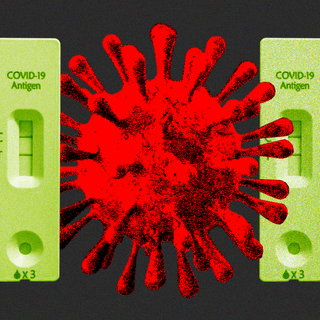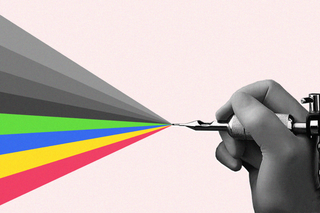
Why Europe Is Banning Colored Ink Tattoos
More than 4,000 chemicals used in colored ink are suspected to cause “cancer or genetic mutations,” say experts.

The European Union (EU) has effectively outlawed the use of colored inks in tattoos from Tuesday citing health concerns. Officials say that around 4,000 chemicals used in the inks can cause “cancer or genetic mutations.” However, the decision is being opposed by tattoo artists and their customers.
Tattoos have been around for thousands of years now. Reportedly, the oldest evidence of human tattoos was found on mummified skin, believed to date back to a point of time between 3370 BC and 3100 BC. Researchers have also recovered clay figurines dating back to 5000 BCE from Japan with faces “painted or engraved to represent tattoo marks.” Withstanding the test of time, the practice of getting tattoos have made their way into the twenty-first century. A 2018 survey of 9,000 individuals from around the world recorded 38% of the global respondents admitting to having, at least, one tattoo — almost a fourth of them had just one; the rest had two or more.
However, like most fun things, tattoos, too, come with cancer risk. And so, the EU banned the ingredients in colored inks that could potentially expose people to the risk underRegistration, Evaluation, Authorization, and Restriction of Chemicals (REACH) — an EU regulation dating back to December 2006.
In effect, the ban prohibits the usage of most of the colors tattoo artists use. “It does not only affect all your green tones or all your blue tones. It’s also going to affect purples, some browns, a lot of the mixed tones, the muted tones, your skin tones, all this stuff… You’re talking about 65-70% of the palette that a tattoo artist uses,” Mario Barth, an internationally-renowned tattoo artist, told NPR. The concern is then one of limiting opportunities for professionals.
Thousands of individuals are opposing the ban under a campaign called “Save the Pigments,” which has reportedly gathered over 170,000 signatures. They argue that it can “have a lasting negative impact on the economic competitiveness of European tattooists… and would seriously jeopardize the very existence of this profession… Consumers could switch to providers from abroad or switch to dubious providers.”
Related on The Swaddle:
Tattoos Are a Political Act of Resistance in a Beauty Culture That Demands Conformity
In the meantime, the EU is insisting that their objective “is not to ban tattooing but to make the colors used in tattoos and permanent make-up safer.”
The Australian Cancer Council states that while they haven’t come across any instance of cancer “directly attributable to tattooing,” tattoo inks are known to contain cancer-causing substances or carcinogens. They referred to a 2016 analysis of 49 tattoo inks, which found “mismatch[es] between content and labeling,” and presence of carcinogens in addition to “other hazardous components [like] barium, copper, mercury, amines, and various colorants.”
“In order to achieve the permanent effect, tattoo ink is injected into the dermis — the deeper layer of the skin — and stays in the skin for a lifetime. Over time, macrophages take up [the] pigment and may transport it into the lymphatic system and lymph nodes. This means other tissue in the body can be exposed to potentially carcinogenic materials in the tattoo ink,” they explained, adding that “a number of carcinogens that have been found in tattoo inks have been associated with cancers elsewhere in the body, such as the liver or bladder.”
Ines Schreiver, who studies tattoo ink at the German Federal Institute for Risk Assessment, told NPR that “it’s very, very likely that tattoo pigments will also end up in other organs, but in a very minor amount compared to the skin and lymph nodes.” One of the reasons behind this is blood vessels can be damaged in the process of getting a tattoo, which gives the “ink access to the bloodstream.”
Related on The Swaddle:
High Levels of Toxic Chemicals Found in Top Make‑Up Brands’ Products: Study
An article on Healthline further points out that while “there’s no definitive proof that getting a tattoo causes skin cancer,” it is also pertinent to remember that tattoo inks are neither approved nor regulated by agencies like the FDA — suggesting that we may not understand the extent of the risk involved.
Further, experts also warn that when a “tattoo begins to fade and lose its pigment,” it can break down into a multitude of cancer-causing compounds.
The dearth of scientific consensus on how dangerous tattoo inks is has made it difficult to gauge the pertinence of EU’s ban. Due to a lack of data on the subject, and the absence of regulatory standards to keep a check on what goes into tattoo inks, extensive research isn’t possible. “[The ban] just went into action but is highly disputed… We are still at a point where we don’t know all the ingredients that are in the inks… And, unfortunately, it has to be said that it appears that sometimes even some manufacturers might also have the same problem, even though they produce the inks,” Schreiver noted.
As such, many tattoo artists and their customers believe that individuals should have the right to decide whether they want to take the risk — just like people do with tobacco and alcohol consumption.
Devrupa Rakshit is an Associate Editor at The Swaddle. She is a lawyer by education, a poet by accident, a painter by shaukh, and autistic by birth. You can find her on Instagram @devruparakshit.
Related


Can Fresh Starts Make People Better at Pursuing Goals?
